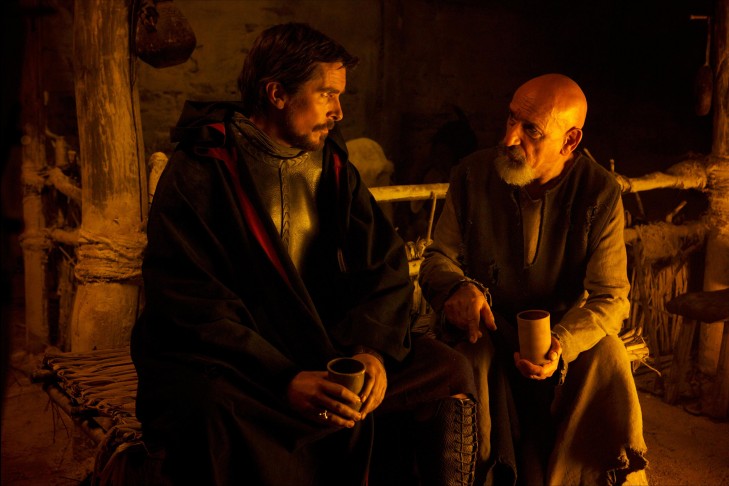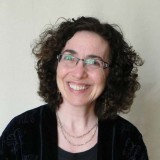“Waaa…!” I hear a baby wail and look across the room. I see the rabbi, curled up on the floor. He is playing the part of baby Moses.
“Look!” shouts an 8-year-old girl playing Batya, Pharaoh’s daughter. “There’s a baby in a basket floating on the river! I want to help him.”
I am visiting a congregation in the southwest. I was invited to work with families to prepare for Passover. Passover is the quintessential storytelling holiday, when Jews recount the Exodus story of the liberation of the Israelite slaves from Egypt. Most people are accustomed to reading the Exodus story from a Haggadah, a book that guides the seder, a home-centered ritual dinner. A central Jewish teaching is that because we were once strangers in the land of Egypt, we should have compassion for others who are oppressed or marginalized. We are instructed to feel as if we, too, came out of Egypt.
My goal during my brief residency at this congregation is to share some creative ideas for how to make the storytelling at their Passover seders more interactive and to engage all ages.
Over the course of three days, I meet separately with the educators, the parents, and the children. I make sure that everyone has a working knowledge of the Exodus story. But rather than tell the story in a narrator’s voice, I relate the progression of events while speaking in the first person from 12 different characters’ point of view. My approach is rooted in midrashic storytelling, a practice dating back to the first century of the common era, and still done in contemporary settings. Readers are invited to answer questions about a text by filling in details with one’s imagination and creating stories.
For our final session, I send groups that combine teachers, clergy, parents, and children to the four corners of a large classroom to develop four different scenes. In one corner, a group depicts Hebrew slaves working and experiencing the 10 plagues. In another corner, baby Moses is hidden and discovered by Batya. Scene #3 shows Pharaoh finally telling the Israelites to leave. The slaves are getting ready to leave Egypt, wondering what to pack, and confronting the unknown. Scene #4 is the moment at the Red Sea when Nachshon has the courage to step into the water; the sea parts and the Israelites cross over.
I guide them to improvise dialogue and I offer prompts to help them imagine the experiences of the characters in the story with all of their senses. For example, what does it feel like to work and not be allowed to take a break? If you had to leave your home and only take what you could carry, what would you bring? If you have only known slavery, how might freedom seem to you? I encourage them to imagine the experiences of the characters with all of their senses: what is the temperature of the air around you, what sounds do you hear, what is the color of the water? I suggest they can play animals or other imagined characters who may not be written in the text.
When the rabbi jumps into his role as baby Moses wholeheartedly and with such a sense of fun, he helps both children and adults abandon their inhibitions. I see frogs jumping around in one corner (one of the ten plagues), cows mooing in protest as they are led into the desert, children who are tired and complaining about walking so far, resourceful parents protecting their children from the hot sun. Some participants grab make shift props from the preschool classroom. Once each group has improvised their scene, we put the sequence together. The energy is high, with lots of laughter and delight at seeing each other’s clever portrayals. At the conclusion, I step into the role of Miriam and lead them with my tambourine to sing and dance in celebration of freedom.
Later, I overhear an exchange between a woman and her daughter. The daughter says, “We could never act out the story like that at our seder.” The mother says, “Sure, we could! Why not?”
Later the rabbi says to me, “I can’t believe she said that. That woman often resists any kind of change! We just opened up new possibilities!”
For anyone hosting or attending a seder this year, I suggest you try bringing the Exodus story to life in a fun, interactive way. You can choose one or more scenes to act out rather than, or in addition to, reading from the Haggadah. Ask guests of all ages to assume roles in the story and to speak from that character’s point of view. Even if guests are reluctant to get up from the table, you can ask each other questions, or wonder out loud about the inner thoughts of the characters. By using all of your senses, you can imagine what it was like to be there and understand that you too, came out of Egypt.
For more ways I use story-based approaches, see my other Story Arc blog posts!
This post has been contributed by a third party. The opinions, facts and any media content are presented solely by the author, and JewishBoston assumes no responsibility for them. Want to add your voice to the conversation? Publish your own post here. MORE



